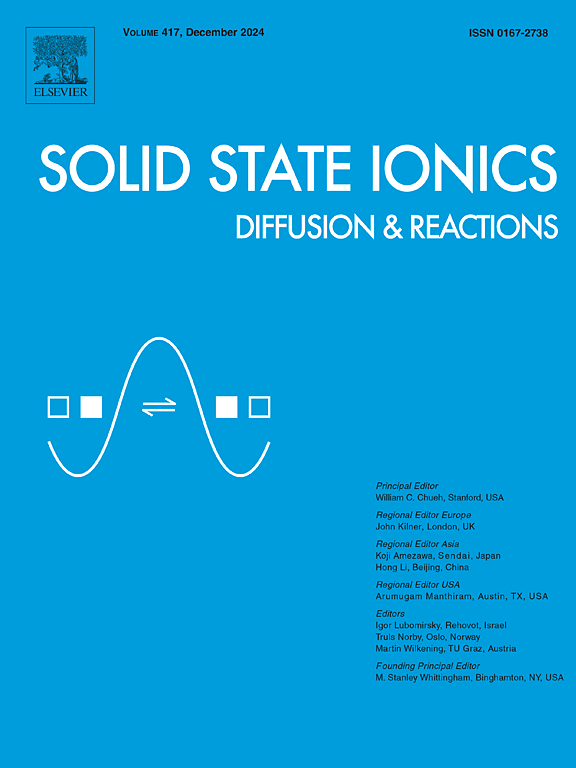One-step fabrication of sodium-ion conducting cotton-based solid-state electrolyte for primary battery applications
IF 3.3
4区 材料科学
Q3 CHEMISTRY, PHYSICAL
引用次数: 0
Abstract
Lithium-ion batteries and liquid electrolyte-based energy storage systems face intrinsic limitations that necessitate alternative solutions. Sodium-ion batteries with solid-state electrolytes, particularly biopolymer electrolytes, have emerged as promising candidates for sustainable battery technologies. This study developed a biopolymer electrolyte using cotton cellulose and explored its structural, dielectric, and transport properties upon doping with sodium nitrate () salt and bismuth oxide () nanoparticles (NPs). Three samples, pristine cotton (PC), -doped cotton (PCS), and with NPs-doped cotton (PCSN) were prepared using a polymer adsorption palletization technique. XRD, FTIR, and SEM with EDX confirmed successful doping, revealing changes in crystallinity, chemical interactions, and microstructural modifications respectively. The impedance spectroscopy and dielectric studies showed insulating behaviour for pristine cotton, while -doped cotton and with NPs-doped cotton exhibited ionic conductivities of and respectively. PCS-based cells demonstrated superior performance with open circuit voltage of , current density of , power density of , energy density of , and discharge capacity of .
一次电池用钠离子导电棉基固态电解质的一步制备
锂离子电池和基于液体电解质的能量存储系统面临着内在的局限性,需要替代解决方案。采用固态电解质的钠离子电池,特别是生物聚合物电解质,已经成为可持续电池技术的有前途的候选者。本研究利用棉花纤维素制备了一种生物聚合物电解质,并在硝酸钠(NaNO3)盐和氧化铋(Bi2O3)纳米颗粒(NPs)掺杂后,研究了其结构、介电和输运性质。采用聚合物吸附制粒技术制备了原始棉(PC)、纳米3掺杂棉(PCS)和纳米3掺杂Bi2O3纳米3掺杂棉(PCSN) 3种样品。XRD、FTIR和SEM与EDX证实了成功掺杂,分别揭示了结晶度、化学相互作用和微观结构的变化。阻抗谱和电介质研究表明,纳米3掺杂棉花和纳米3掺杂Bi2O3 nps棉花的离子电导率分别为1.71×10−4Scm−1和3.81×10−5Scm−1。电池的开路电压为2.2V,电流密度为3.55μAcm−2,功率密度为0.29WKg−1,能量密度为7.09 wkg−1,放电容量为2.32μAh−1。
本文章由计算机程序翻译,如有差异,请以英文原文为准。
求助全文
约1分钟内获得全文
求助全文
来源期刊

Solid State Ionics
物理-物理:凝聚态物理
CiteScore
6.10
自引率
3.10%
发文量
152
审稿时长
58 days
期刊介绍:
This interdisciplinary journal is devoted to the physics, chemistry and materials science of diffusion, mass transport, and reactivity of solids. The major part of each issue is devoted to articles on:
(i) physics and chemistry of defects in solids;
(ii) reactions in and on solids, e.g. intercalation, corrosion, oxidation, sintering;
(iii) ion transport measurements, mechanisms and theory;
(iv) solid state electrochemistry;
(v) ionically-electronically mixed conducting solids.
Related technological applications are also included, provided their characteristics are interpreted in terms of the basic solid state properties.
Review papers and relevant symposium proceedings are welcome.
 求助内容:
求助内容: 应助结果提醒方式:
应助结果提醒方式:


